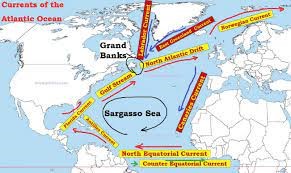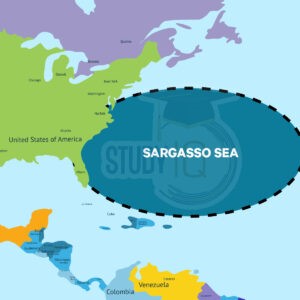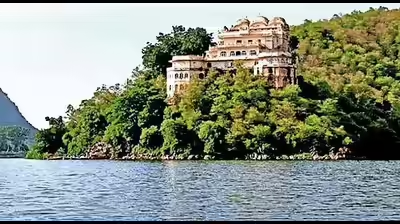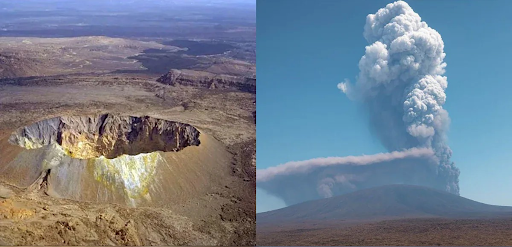Description

Disclaimer: Copyright infringement not intended.
Context
- The Sargasso Sea in the Atlantic Ocean is now at least 30% more acidic and 1.8 degrees Fahrenheit warmer than it was 40 years ago and climate change is to blame.
About Sargasso Sea
- A genus of brown macroalgae called Sargassum is abundant in the Sargasso Sea, an area of the Atlantic Ocean.
- Situated in what is known as the renowned "Bermuda Triangle," this sea is the only one in the world without a land border.
- Unlike other seas, its placement is dictated by ocean currents.
- It is surrounded by the huge network of circulating ocean currents known as the Northern Atlantic Subtropical Gyre.
- The Sargasso Sea is divided into four sections: the northern limit is marked by the North Atlantic Current, the southern limit by the North Equatorial Current and Antilles Current, and the western limit by the Gulf Stream.
- These borders are shifting in a clockwise manner.
- Season by season, they change in accordance with the Azores High-Pressure Centre.
Sea Boundaries
- The Gulf Stream, the North Atlantic Current, the Canary Current, and the North Atlantic Equatorial Current all serve as boundaries for the anticlockwise-circulating North Atlantic Gyre, which is also known as the North Atlantic Ocean Current System.
- It is roughly 1,100 km (680 mi) wide and 3,200 km (2,000 mi) long, and it is located between 20° and 35° north and 40° and 70° west.
- Bermuda is close to the western seaboard.
- The Sargasso Sea is not a sea in the traditional sense but is instead defined by ocean currents that form a gyre and trap the seaweed and other floating debris in its centre.

More Information about Sargasso Sea
- The tranquil, elliptical Sargasso Sea is a region of the North Atlantic Ocean that is abundant with free-floating Sargassum seaweed.
- Situated between the parallels 20° N and 35° N and the meridian 30° W and 70° W, it is situated within a clockwise-moving ocean current system, with the Gulf Stream—which originates from the Gulf of Mexico—forming a portion of the western rim.
- Weak currents, minimal precipitation, rapid evaporation, light breezes, warm, saline seas, and depths ranging from 5,000 to 23,000 feet (1,500 to 7,000 m) are the characteristics of the sea.
- These elements, along with the absence of heat mixing, produce a biological desert that is mainly absent of plankton, which is a major food source for fish.
- The brown seaweed, also called gulfweed, is kept above the water's surface by its tiny but conspicuous bladders, which resemble tiny berries.
- Then, it seems to get a little replenished by coastal plants floating in from the southwest as it moves with the wind and current.
- Seaweed, most of which is exclusive to the coastal zone, supports a specialist marine life.
- When Christopher Columbus made his first voyage through the Sargasso Sea in 1492, he gave the first description of the region, which includes the Bermuda islands.
- The seaweed signalled land nearby, so Columbus was encouraged to press on.
- However, many early navigators were afraid a worry unfounded of getting entangled in the flotsam of floating vegetation.

Importance of Sargasso Sea
- Sargassum is an essential habitat for fish, crabs, prawns and other marine animals whose habitats have been adapted to these floating algae.
- The Sargasso Sea is home to breeding populations of white marlin, dolphins, porbeagle sharks, and threatened and endangered eels.
- Numerous endemic species, like the Sargassum fish and the young eels known as "leptocephali," can be found in the Sargasso Sea, which is renowned for its distinctive ecology.
|
PRACTICE QUESTION
Consider the following statements regarding the Sargasso Sea:
- It has no land borders and is totally contained within the Atlantic Ocean.
- This sea's Canary current flows in an easterly direction.
Which of the statements given above is/are correct?
A) 1 only
B) 2 only
C) Both 1 and 2
D) Neither 1 nor 2
Answer: C
|












